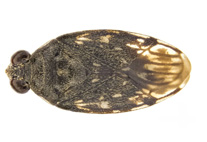Abstract
The description of the genus Coronatella Dybowski & Grochowski, 1894 (Cladocera: Chydoridae: Aloninae) pointed towards the need for a revision of species on a worldwide scale. For the Neotropical region, the main challenge noted was the redescription of Coronatella poppei (Richard, 1897). We redescribed this species and revised populations from Brazil that had previously been assumed to be Alona poppei (= C. poppei). Our results indicate that C. poppei is distributed in the southern part of South America. In Brazil, two other taxa are recognized, Coronatella paulinae sp.nov. and Coronatella serratalhadensis sp.nov., which are morphologically distinguished both from each other and from C. poppei. These species also have different geographic distributions. The Brazilian Coronatella fauna also comprises Coronatella monacantha (Sars, 1901) and a related species, Coronatella undata sp.nov. Our results point towards a previously unknown high diversity of Coronatella in the Neotropical region with several implications for to biogeography of the genus.

